Boise City National Bank Building
Introduction
Text-to-speech Audio
This four-story stone-faced building was constructed in 1891 and was home to Boise City National Bank until the Great Depression when it joined many other financial institutions in closing its doors. The main entrance on N. 8th St., below a curved archway, features a stone tablet inscribed "BOISE CITY NATIONAL BANK." Since the bank's closure in 1932, several banks and a variety of other tenants have occupied the historic structure. The building was studied for the Historic American Buildings Survey in 1974 and was added to the National Register of Historic Places in 1978. Fork Restaurant currently occupies the ground floor along N. 8th St. of what has become the "805 Idaho" building; Alavita, an Italian restaurant, is in an Idaho St. space.
Images
2018 photo of Boise City National Bank building's 8th St. facade (Tamanoeconomico)
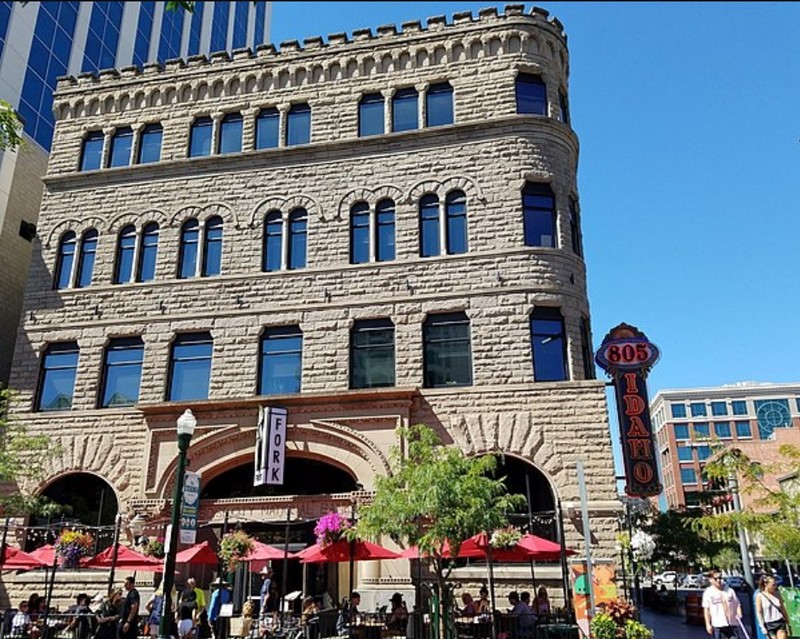
Front (8th St., left) & north side (Idaho St.) of Boise City National Bank in 1974 photo (Duane Garrett, HABS ID-23)
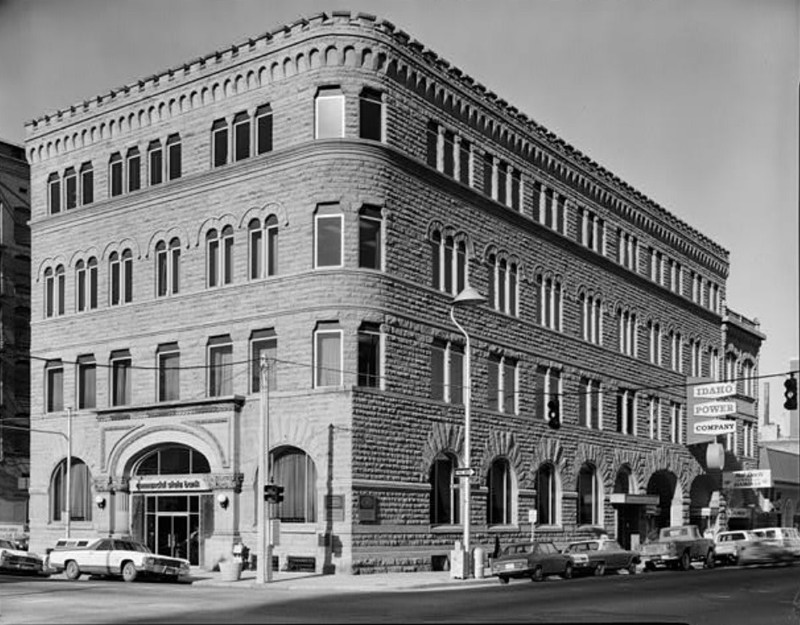
North (Idaho St.) side of bank building (left) in 1974 HABS photo (Garrett)
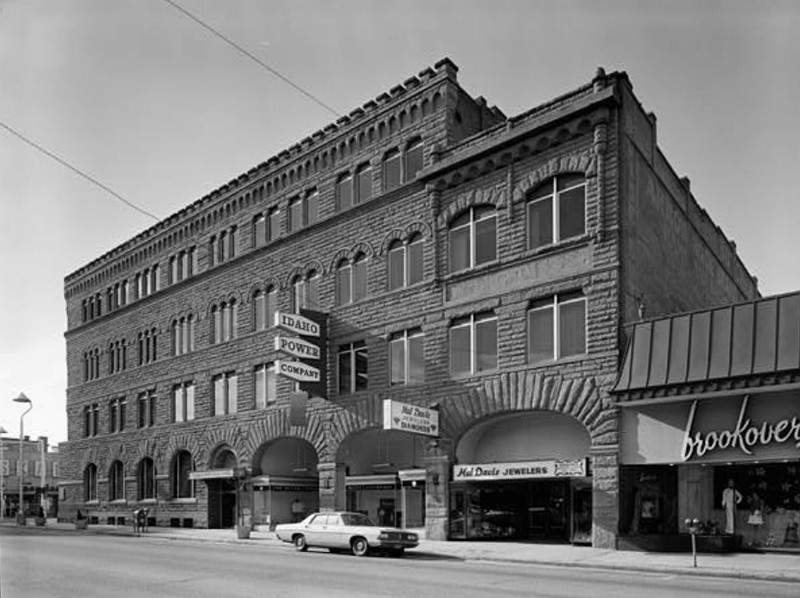
Circa 1913 architectural plans for remodeled banking room for Boise City National Bank (Tourtellotte & Hummel, HABS photo)
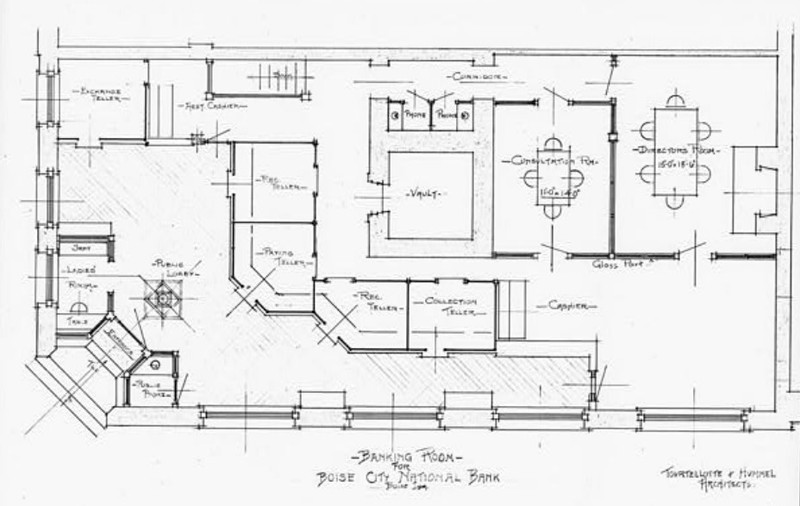
Bank lobby of Boise City National Bank building in 1980 HABS photo (Garrett)
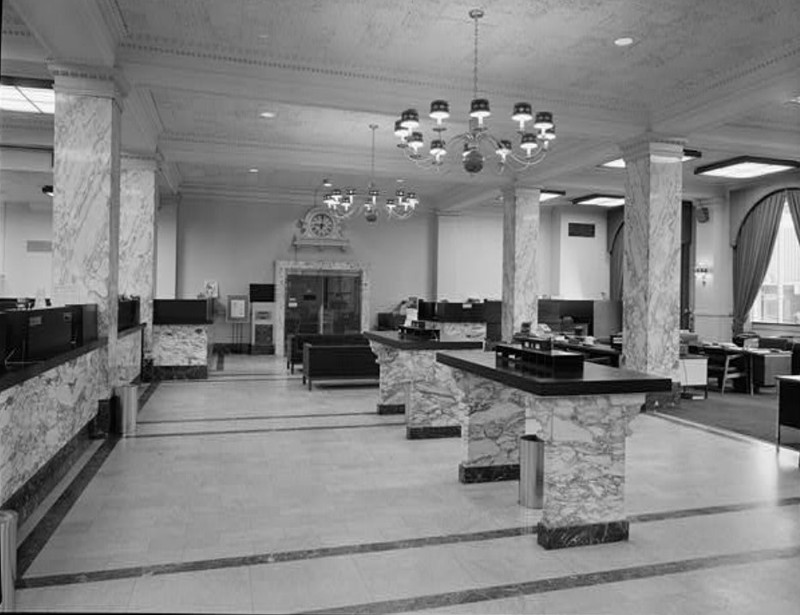
Vault in basement of Boise City National Bank building in 1980 photo (Garrett, HABS)
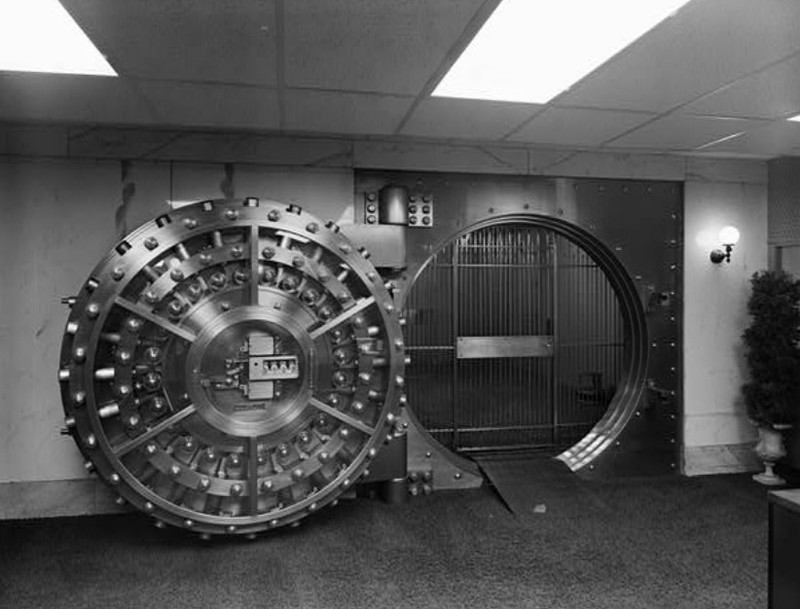
4-story bank building (green line) on SW corner 8th & Idaho on 1912 Sanborn map (p.49)
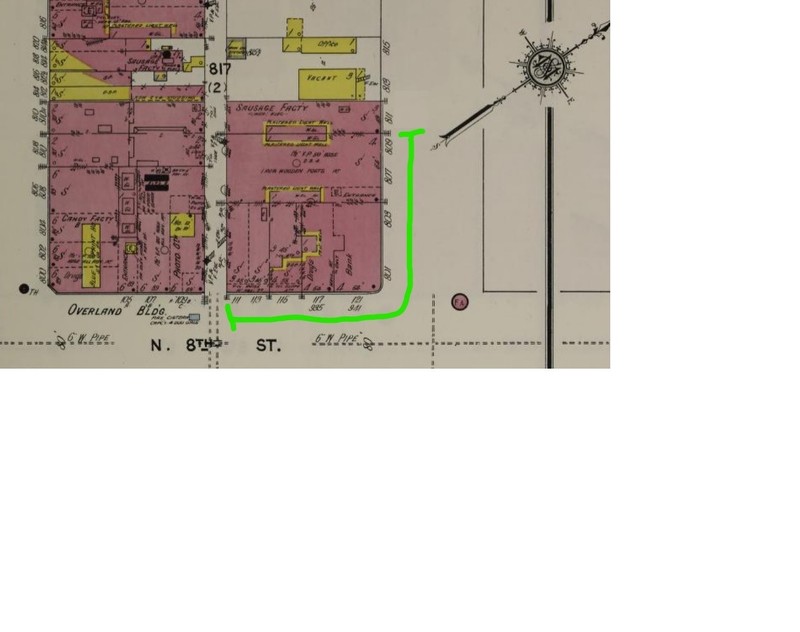
3-story Boise City National Bank building (green line) on 1893 Sanborn (p. 11)
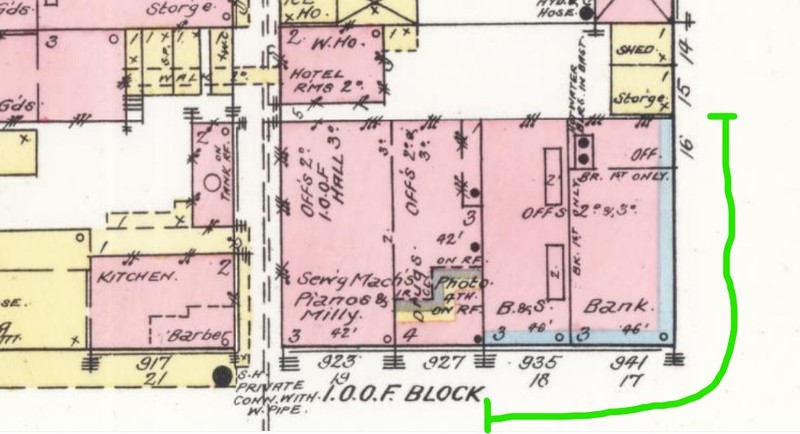
Backstory and Context
Text-to-speech Audio
Boise City National Bank was founded in 1886 by several Boise businessmen plus outside investors. The bank was originally located at the same intersection as the present building (8th and Idaho Streets), but on the opposite corner. Bank president in 1891 was Hosea Eastman. The original design for the new Boise City National Bank building by Boise architect James King called for a three-story structure of brick on a sandstone base. The sandstone from the existing bank building was recycled into the two-foot-thick walls of the first floor of the new building; that sandstone originated in the local Tablerock Quarry. The Romanesque Revival design was meant to instill confidence that depositors' money would be safe. The design of this bank building is said to have been based on the 1887 Marshall Field Store building in Chicago, by H.H. Richardson. The new bank held two vaults; the first, made of marble, was in the basement to hold money in a large safe behind an 18-inch-thick door. The other vault was for holding documents. King also designed the Moore-Cunningham mansion in Boise (also a Clio entry).
A fourth floor was added to the bank building in 1906, topped by a jagged roofline, resembling a castle or fort. The floors above the first were designed to hold office space. There were six banks in Boise by 1912, with over $6 million in deposits. The 1891 building was in need of renovations by 1913, and the local firm Tourtellotte and Hummel designed a new corner entrance with granite pillars. The building was expanded westward with four new bays along Idaho St. The exterior brick walls of floors two to four were covered in matching sandstone.
Boise City National Bank did not survive the Great Depression. One morning in 1932, the bank failed to open. The building was soon occupied by another bank, First Security Bank. Other tenants have included the Idaho Power Company, the Boise Water Corporation, and Balloon and Latimer Company. A multi-millionaire named Jack Simplot bought the building in 1948 to become the headquarters of his industrial and business enterprises.
In the 1980s, the building was renovated. The building underwent an award-winning renovation again in 2010 by the Rocky Mountain Companies LLC. Besides its original name as the "801 Building," the structure has been called the Boise City National Bank, the 805 Idaho Building (after the address changed from 801 around the 1950s), or the Simplot Building. A post-1970s decorative lighted sign reading "805 Idaho" is attached to the first floor on the Idaho St. side near the corner with 8th St. A bronze plaque marking the historic building is affixed near one of the arched double-door entryways along Idaho St. The marble vault is now located below a ground-level restaurant named Fork; bank tellers would have been in the space occupied by the restaurant.
Sources
Boise Commercial Club. Boise Idaho. Boise, ID. Boise Commercial Club and Syms-York Co., circa 1913.
Hibbard, Don. NRHP nomination of Boise City National Bank, Boise, Idaho. National Register. Washington, DC. National Park Service, 1978.
Preservation Idaho. 801 Idaho Building, Idaho Architecture Project. January 1st, 2022. Accessed January 12th, 2023. https://www.idahoarchitectureproject.org/properties/801-idaho-building/.
Rowse, Patricia L. Hunsucker, C. Wayne. Historic American Buildings Survey documentation of Boise City National Bank, 805 W. Idaho St., Boise, Idaho. HABS ID-23. Washington, DC. Department of the Interior, 1980.
https://en.wikipedia.org/wiki/Boise_City_National_Bank#/media/File:Boise_City_National_Bank_(1).jpg
Library of Congress (LOC): https://www.loc.gov/pictures/collection/hh/item/id0014/
LOC: https://www.loc.gov/pictures/collection/hh/item/id0014/
LOC: https://www.loc.gov/pictures/collection/hh/item/id0014/
LOC: https://www.loc.gov/pictures/collection/hh/item/id0014/
LOC: https://www.loc.gov/pictures/collection/hh/item/id0014/
LOC: https://www.loc.gov/item/sanborn01569_005/
LOC: https://www.loc.gov/item/sanborn01569_003/
